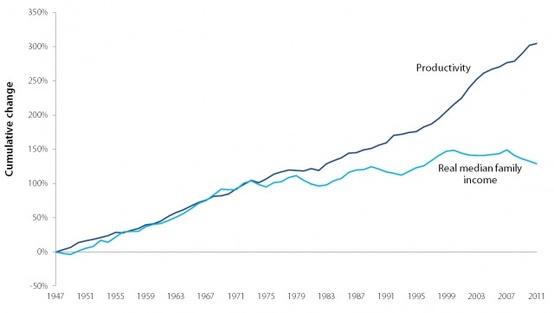Let’s say you represent a program that would really save the government money as well as serving a social need. For instance, your program can cut the number of felonies, thereby saving $31,000 per person/per year in incarceration costs while reducing human suffering and injustice.
You’d like to ask the government for funds. You can’t get money from the executive branch at any level, because government budgets are committed to specific current activities, such as incarcerating a predicted number of inmates or fielding a certain number of police officers. Most agencies lack discretionary budgets for prevention, even if an investment would save them money later.
You could get funding from a legislative appropriation, but legislatures are not well set up to distinguish between truly effective preventive programs and those that just lobby well. In a crowded environment with tight budgets, your odds aren’t especially good.
You could offer the executive branch a contract that would commit the government to pay you from the savings that you actually achieve later on. They could measure the size of the savings using the most rigorous methods, such as random control groups. Then they could afford to pay you out of the savings in their planned budgets in future years.
But how can you operate your program until you deliver the savings and get paid? That apparent conundrum may have an answer: private third parties could invest in your program and get their money back–with a profit–once the government pays you for saving it money.
This is the pay-for-success model. Last week, we heard about it at a Tisch College panel with Jeffrey Liebman of the Harvard Kennedy School (the intellectual leader of this movement, who also provides technical support to governments); Molly Baldwin, Founder and CEO of Roca Inc., which has a pay-for-success contract to cut incarceration among highly at-risk young men in Massachusetts; Jeff Shumway of Social Finance, who sets up these deals; and Brian Bethune of the Tufts Economics Department and a Tisch College Faculty Fellow for 2015-16.
The evidence seemed compelling that Roca will save Massachusetts money while helping young men get on a better track. But I am a civic engagement/democratic participation guy, so I am supposed to ask, “Where are citizens in all of this?” I would say the following:
First, pay-for-success is value-neutral. It is an efficiency measure that could be used for a wide range of purposes. A dictatorship could use it to round up human rights protesters more effectively. Reducing incarceration in Massachusetts sounds much better than that, yet it could possibly legitimize the prison system. I don’t really agree with that critique, but I would acknowledge that any social intervention is a value choice. As such, it should be informed and reviewed by the public.
We already have the power to elect the high officials who preside over Massachusetts’ state government. But an election presents a binary choice (the Republican or the Democrat), which is a crude device for influencing subtle choices, such as whether to fund Roca, Inc. We can lobby and advocate on such matters, but there is an inevitable tendency for most advocates to be biased by self-interest or strong ideology. So we need more deliberative forms of civic engagement that get a wider range of people involved in making difficult value choices.
But increasing civic engagement seems fully compatible with using a pay-for-success model to get the government’s own job done. In fact, pay-for-success is wonderfully transparent. If citizens are asked to pay for 10,000 jail cells, we have no way of knowing how that will affect crime, safety, or fairness. But we can review the Roca, Inc. agreement and decide whether it offers what we want. And we don’t pay a dime unless it delivers.
A different question is how citizens should be involved in the programs themselves. I would hypothesize that in general, programs that produce good results have been designed and built through collaborations that involve the affected communities. Social policy is not like medicine, where chemical compounds that were invented in labs can cure (some) diseases in the real world. Social interventions operate in complex contexts with lots of conflicting values and interests, so they typically work only if they have been co-constructed. That is true, by the way, of Roca; Molly Baldwin emphasized that youth in the program have influenced its design.
Finally, if you want a robust democracy, one element has got to be a reasonably effective government that is capable of delivering what the people choose after due reflection. Eighty years after the New Deal, the US welfare state is not well designed for that purpose. It can’t, for example, make sensible investments in prevention. Even when it pays for activities that should have preventive effects (such as education), it doesn’t pay for success; it just funds the activities, some of which are ineffective. So I believe that pay-for-success is one step toward restoring confidence in government as the people’s instrument. Confidence is not an end in itself, but it is an important means to reengaging citizens in public life.
But see also: “qualms about a bond market for philanthropy”, “can nonprofits solve big problems?” and “innovation and civic engagement.”
The post pay-for-success in government appeared first on Peter Levine.


